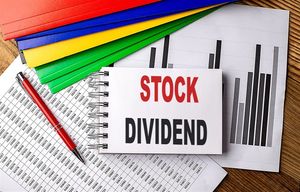What if your portfolio could pay you, month after month, without you having to sell a single share?
That’s the power of dividend investing, one of the simplest and most time-tested ways to generate passive income.
In his video “7 Ways to Make Money from Your Investments (Beyond Dividends),” Rick Orford breaks down how dividends work, what “yield” really means, and why chasing the highest yields can sometimes lead investors into trouble.
The Goal: Income, Not Just Growth
An income-generating strategy focuses on building steady, recurring cash flow — not just capital appreciation.
The idea is simple: Use your capital to buy assets that pay you regularly. Then, reinvest that passive income or use it to cover expenses, without selling your investments.
Common income sources include:
- Dividend-paying stocks
- Government and corporate bonds
- Options strategies like covered calls or credit spreads
“The goal is to create reliable cash flow that builds wealth, provides stability, or covers your living expenses,” Rick explains.
How Dividends Work
A dividend is a company’s way of sharing profits with shareholders.
If a company pays $2 per share annually, that means every share you own pays you $2 a year — as long as you hold the stock.
Most U.S. companies pay quarterly, though some – like Realty Income (O) or AGNC Investment Corp. (AGNC) – pay out dividends monthly, giving investors a steady paycheck-like flow of income.
Understanding Dividend Yield
Dividend yield compares how much a company pays in dividends to its stock price.
Example:
- A stock trades at $100
- It pays $2 in annual dividends
- That’s a 2% yield ($2 ÷ $100)
At first glance, it’s tempting to think “the higher the yield, the better”... but that’s not always the case.
The Hidden Risk Behind High Yields
When a stock’s price falls sharply, its yield will rise. However, that can signal deeper problems.
“If a company is paying more than it can afford,” Rick says, “that dividend might not last.”
A company needs stable cash flow and consistent earnings to sustain dividend payments. If earnings fall or debt rises, the company might cut or suspend payouts — and investors relying on that income could take a hit.
Think of it like a household budget. When income is strong and expenses are under control, allowances (dividends) are easy to pay. But if income dries up or costs spike, those payouts are the first to go.
That’s why serious income investors look beyond yield to metrics like payout ratios, earnings growth, and free cash flow stability.
How to Find Quality Dividend Stocks
Not all dividend stocks are equal. To find consistent income, focus on companies with a proven track record of dividend growth:
- Dividend Aristocrats: S&P 500 Index ($SPX) companies that have raised dividends for 25+ consecutive years.
- Dividend Kings: Companies that have grown their payouts for 50+ years.
- Best Dividend Stocks: Strong yields supported by solid fundamentals.
These lists highlight stocks with sustainable payouts, not just high yields. Plus, you can filter and sort the results by yield, financial ratios, and sector performance.
Building Your Passive Income Stream
To build long-term income stability, many investors mix dividend stocks with other income sources, such as bonds or covered calls.
You can also reinvest your dividends automatically (through a DRIP, or dividend reinvestment plan) to grow your share count and compound returns over time. Over years, that consistency can turn a modest yield into a powerful wealth-building engine.
Final Takeaway
“Dividend investing is about more than chasing yield,” Rick reminds viewers. “It’s about consistency, quality, and sustainability — that’s what builds freedom.”
Watch the Clip: How Dividend Investing Generates Passive Income
- Stream the Full Video: 7 Ways to Make Money from Your Investments (Beyond Dividends)
- Explore Barchart’s Dividend Stock Screener
On the date of publication, Barchart Insights did not have (either directly or indirectly) positions in any of the securities mentioned in this article. All information and data in this article is solely for informational purposes. For more information please view the Barchart Disclosure Policy here.
More news from Barchart







